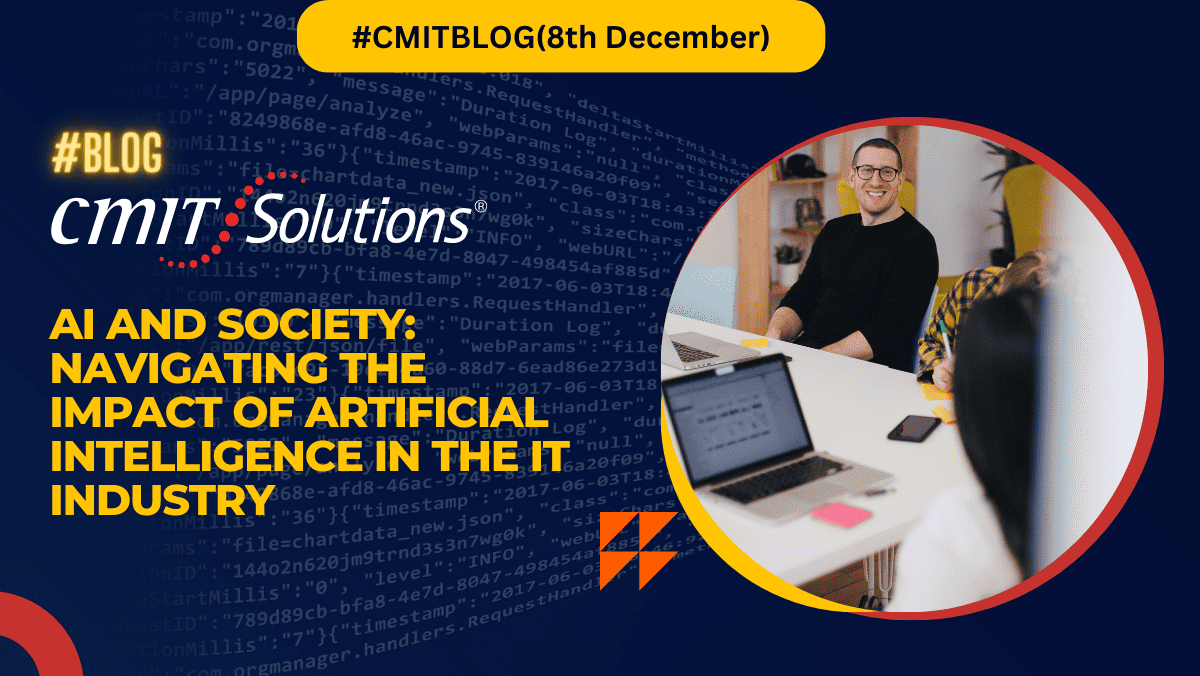Introduction
Artificial Intelligence (AI) is not merely a technological advancement; it’s a transformative force that’s shaping the very fabric of our society. The integration of AI into the IT industry has far-reaching implications on various aspects of our social interactions, from communication and entertainment to education and employment. In this blog post, we’ll explore the intricate relationship between AI in the IT industry and its social impact, examining the advantages, disadvantages, and the evolving dynamics of this powerful alliance.
Advantages of AI in Social Contexts:
1. Enhanced Communication: Breaking Language Barriers
AI-powered translation services break down language barriers, facilitating seamless communication across diverse linguistic and cultural backgrounds.
– Example: Social media platforms using AI to provide real-time translation of user-generated content, fostering global conversations.
2. Personalized Content Discovery: Tailoring Social Experiences
AI algorithms analyze user behavior to deliver personalized content, enhancing the relevance and enjoyment of social media feeds and online experiences.
Streaming services utilizing AI recommendations for personalized movie and music suggestions based on individual preferences.
3. AI in Social Networking: Strengthening Connections
AI enhances social networking platforms by recommending relevant connections, groups, and content, fostering meaningful online relationships.
– Example: Social media platforms using AI to suggest friends, groups, and events based on user interests and activities.
4. Content Moderation and Safety Measures
AI algorithms aid in content moderation, detecting and removing inappropriate or harmful content to create safer online environments.
Social platforms using AI to identify and filter out hate speech, bullying, and other forms of harmful content.
5. Education and Information Access
AI-powered educational tools provide personalized learning experiences, making education more accessible and tailored to individual needs.
– Example: AI-driven educational platforms offering adaptive learning modules that cater to each student’s pace and learning style.
Disadvantages and Challenges:
1. Algorithmic Bias: Impact on Social Equity
AI algorithms may inherit biases from training data, leading to issues of discrimination and reinforcing social inequalities.
– Example: Biased algorithms in hiring processes perpetuating gender or racial disparities in employment.
2. Privacy Concerns: Balancing Innovation and Security
The widespread use of AI in social contexts raises concerns about the privacy of personal data and the potential misuse of information.
– Example Social media platforms collecting and utilizing user data for targeted advertising, raising privacy concerns.
3. Job Displacement: Shifting Employment Dynamics
The automation capabilities of AI may lead to job displacement in certain industries, impacting employment dynamics and requiring workforce adaptability.
– Example: Automated customer service chatbots replacing human roles in customer support.
4. Social Isolation: Impact on Human Connections:
Over-reliance on AI-driven communication may contribute to social isolation, potentially diminishing the quality of face-to-face interactions.
-Example: Dependence on virtual assistants for social interactions instead of engaging with real-life social circles.
5. Ethical Concerns in AI Decision-Making
AI decision-making processes may lack transparency, raising ethical concerns about accountability and the consequences of automated choices.
– Example: Automated systems making decisions on loan approvals without clear explanations for denials.
6. Deep fakes and Misinformation
AI-powered deep fake technology poses a threat to social trust by creating realistic yet fabricated content, leading to misinformation and potential harm.
– Example: Deep fake videos impersonating public figures for deceptive purposes.
7. Dependency on AI for Critical Functions:
Over-reliance on AI for critical functions may pose risks if systems fail or are manipulated, impacting society’s ability to function without technological support.
– Example: Dependence on AI algorithms for traffic management leading to disruptions in case of system failures.
Navigating the Future: Striking a Balance
As we navigate the evolving landscape of AI in the IT industry, it’s crucial to strike a balance between harnessing its advantages and addressing the challenges it presents. The responsible development and use of AI technologies require ethical considerations, transparency, and a commitment to mitigating potential societal risks. By fostering an environment of innovation and accountability, we can shape a future where AI contributes positively to our social fabric, enhancing connectivity, accessibility, and overall well-being.
Conclusion
In conclusion, the integration of Artificial Intelligence (AI) into the IT industry has undeniably transformed various facets of our social landscape, presenting both unprecedented advantages and complex challenges. The advantages, such as enhanced communication, personalized content experiences, and improved safety measures, showcase the positive potential of AI in fostering connected and dynamic societies.





